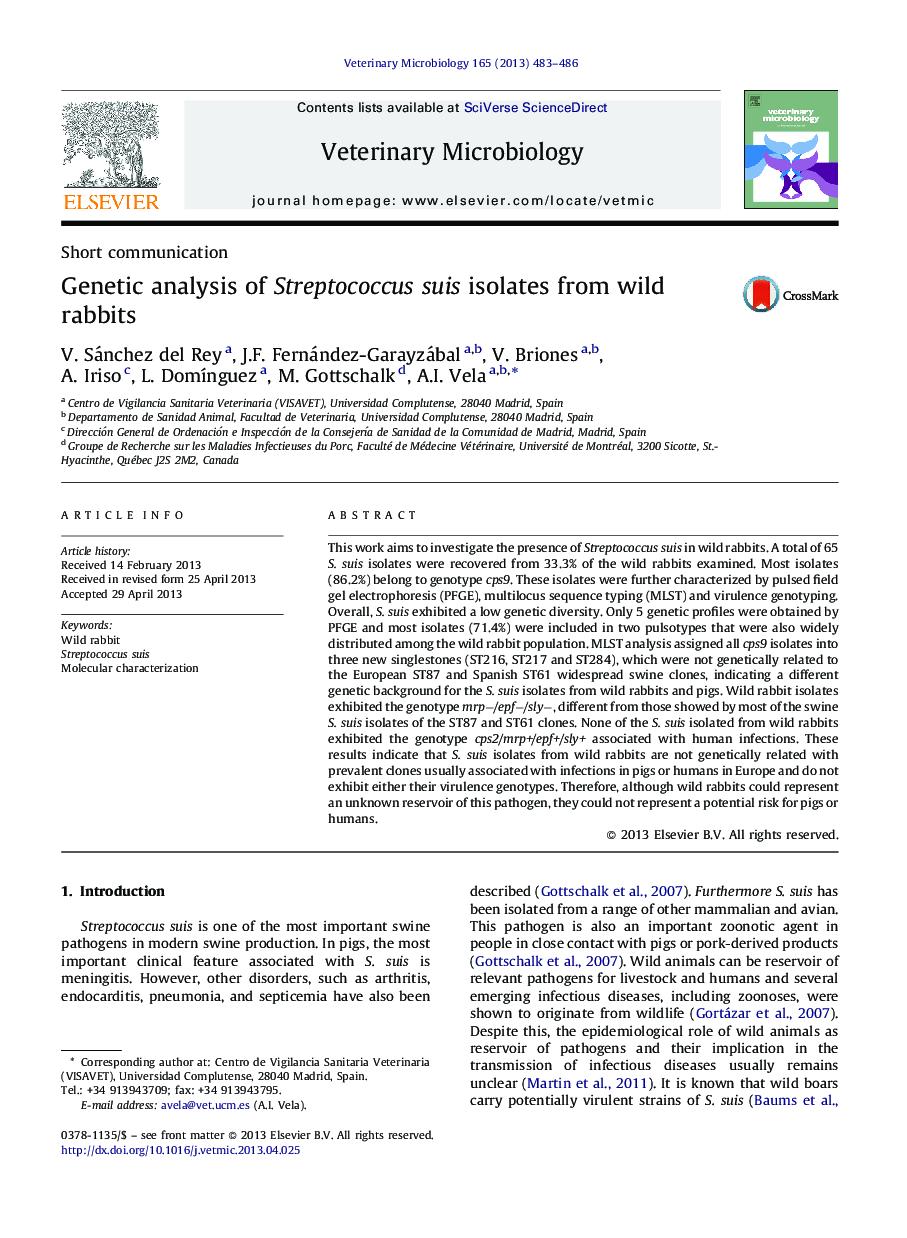| Article ID | Journal | Published Year | Pages | File Type |
|---|---|---|---|---|
| 2466854 | Veterinary Microbiology | 2013 | 4 Pages |
This work aims to investigate the presence of Streptococcus suis in wild rabbits. A total of 65 S. suis isolates were recovered from 33.3% of the wild rabbits examined. Most isolates (86.2%) belong to genotype cps9. These isolates were further characterized by pulsed field gel electrophoresis (PFGE), multilocus sequence typing (MLST) and virulence genotyping. Overall, S. suis exhibited a low genetic diversity. Only 5 genetic profiles were obtained by PFGE and most isolates (71.4%) were included in two pulsotypes that were also widely distributed among the wild rabbit population. MLST analysis assigned all cps9 isolates into three new singlestones (ST216, ST217 and ST284), which were not genetically related to the European ST87 and Spanish ST61 widespread swine clones, indicating a different genetic background for the S. suis isolates from wild rabbits and pigs. Wild rabbit isolates exhibited the genotype mrp−/epf−/sly−, different from those showed by most of the swine S. suis isolates of the ST87 and ST61 clones. None of the S. suis isolated from wild rabbits exhibited the genotype cps2/mrp+/epf+/sly+ associated with human infections. These results indicate that S. suis isolates from wild rabbits are not genetically related with prevalent clones usually associated with infections in pigs or humans in Europe and do not exhibit either their virulence genotypes. Therefore, although wild rabbits could represent an unknown reservoir of this pathogen, they could not represent a potential risk for pigs or humans.
